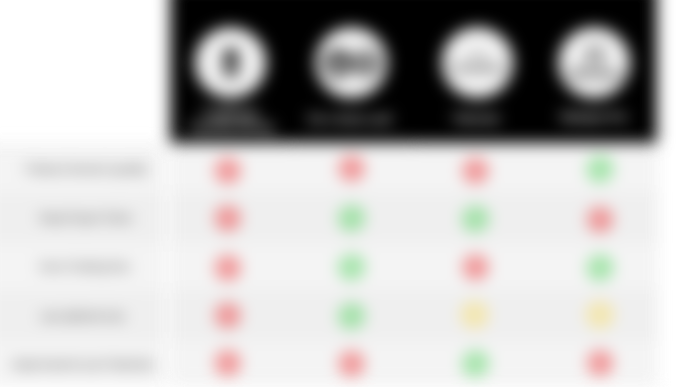New Approaches to Liquidity in DeFi

A read.cash Exclusive
One of the hottest topics in the DeFi ecosystem right now is capital efficiency and solving the machine capital problem. Both of these issues start from the issue of securing sustainable liquidity, and to solve this problem, new protocols that operate on the underlying layer of DeFi (DEX, AMM, etc.) are being released.
Liquidity is one of the main goals to be achieved in emerging financial markets. The most essential problem is that "every user wants to trade as cheaply as possible, and to do that they always need a counterparty". Transaction here is a concept that encompasses not only token swaps, but also loans, borrowings, and derivatives.
Liquidity is especially important for DeFi projects that have just been launched. As the project grows, the team wants more users and stakeholders to enter through the market. In this article, we will look at how DeFi has solved the liquidity problem and how projects such as Fei, Ondo Finance, OlympusDAO, and Tokemak are solving and approaching the next generation of DeFi. Capital only interested in liquidity mining and making money.
The biggest trigger that spurred the growth of the DeFi ecosystem was the issuance and provision of COMP tokens to borrowers and borrowers using the loan market in Compound (Ethereum-based representative lending protocol). This method was the first concept of liquidity mining by exchanging project ownership for temporary liquidity.
From the user's point of view, yield farming is the best strategy to keep capital moving to the place where liquidity mining rewards are the greatest. This causes users to continue to sell the project tokens obtained through liquidity mining to the market and, as a result, move their capital elsewhere when the rewards decrease. Competition is inherently positive for consumers, but it is a factor that continues to face difficult situations for companies (protocols). As will be described later, competition also acts as a driving force for the protocol to continuously innovate.
Despite these high costs, bootstrapping your user base has never been easier. If you launch a token and distribute only 10-50% of that to the community, you can suddenly have a total asset lock-up value (TVL) of tens to hundreds of millions of dollars. The 2020 DeFi pandemic, dubbed the 2020 DeFi Summer, was the pinnacle of trends leading to innovations like Pool 2 style farming.
However, these figures are not sustainable. Both the project and the investors are feeling that liquidity mining will have a negative effect on the long-term growth of the project, and various solutions are being discussed for this.
A new approach to liquidity
Solving the machine capital problem is one of the biggest concerns of the next wave of DeFi growth, recently called DeFi 2.0. New protocols use the extensibility and network effects of existing DeFi protocols as a base layer to achieve greater market efficiency while solving liquidity problems.
Instead of paying high fees to machine capital, the project has one of the following options:
How to purchase the necessary liquidity itself
How to rent from the protocol that provides the highest quality liquidity at the lowest price
The former approach is referred to as Protocol Owned Liquidity or Protocol Assets under Management (PCV, PCA). For example, Fei Protocol, OlympusDAO, and Frax Finance are all based on PCV, so these tokens have very high liquidity per TVL.
Conversely, the latter approach of leasing liquidity is called Liquidity as a Service (LaaS). LaaS can be used efficiently by protocols that specialize in providing these services, such as Fei and Tokemak.
Protocol Ownership Liquidity with Olympus Pro
Olympus Pro leverages the OlympusDAO bond mechanism to provide projects with the opportunity to obtain their own protocol-owned liquidity. Projects can exchange their tokens for any kind of LP tokens or native assets they want at a discounted price. This is a significant improvement over existing liquidity mining programs, where the project does not maintain the liquidity of machine capital.
The native tokens of Olympus Pro bonds do not need to have anything to do with OHM tokens, but projects can be paired with OHM or sOHM to expose themselves to the OlympusDAO ecosystem.
Olympus Pro increases liquidity mining reward costs and shifts the burden on the protocol to more sustainable protocol-owned liquidity. Here, the protocol can use native tokens to secure permanent liquidity without fear of loss. Traditionally, liquid mining represents the same high upfront cost with no cost.
Projects that want liquidity but do not need to own it can opt for an alternative method of leasing liquidity through protocols such as Tokemak and Fei.

Image source
Sustainable liquidity with Token
The approach to Liquidity as a Service (LaaS) was introduced by Tokemak. Tokens allow a project to supply a single token to a reactor, which will be linked to native assets such as ETH, USDC, and FEI (to be planned) in a liquidity pool. TOKE token holders are responsible for making the decision to provide this liquidity where it is most needed and bear the non-permanent loss (IL) of the project.
The burden of non-permanent losses provides a great advantage for depositors. Tokemak accumulates its own assets through transaction fees, which ultimately serves to enhance its ability to provide sustainable liquidity. TOKE tokens will be issued as a reward to users, and TOKE token holders will eventually take ownership of the Tokemak protocol PCA.
TOKE Talknomics encourages participation in the network from a long-term perspective. By acquiring TOKE tokens as a stake, projects can use them wherever they need liquidity. In a way, this method is a pre-investment method, but it has many advantages over the existing method of liquidity mining.
Projects that want long-term sustainable liquidity are advised to seed the Tokemak reactor with the maximum amount of TOKE tokens available. This is because the tokens can be used to pair project tokens in a liquid market that can be supported without the risk of non-permanent losses.
LaaS by Fei x Ondo
The Pay Protocol supports FEI, a decentralized and scalable stablecoin backed by on-chain, transparently verifiable holdings. Fei can use PCV to back their liquidity supply with FEI as the underlying pair.
Pay Protocol, in partnership with Ondo Finance, provides a flexible, cost-effective and time-limited liquidity service. Basically, a project can deposit its project tokens into the Ondo Liquidity Vault for any period of time, and the Pay Protocol will match the deposit with the newly issued FEI to form a liquidity pair. Tokens are paired in AMMs like Uniswap or Sushiswap.
The Pay Protocol essentially doubles the liquidity the project provides and eliminates all upfront capital costs. At the end of the Vault period, Vault will return the FEI to the Pay Protocol with a small fixed fee and all remaining tokens will be returned to the project.
Lead Image source
